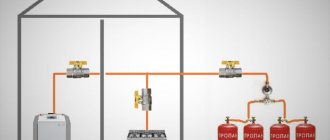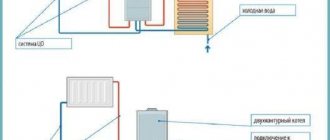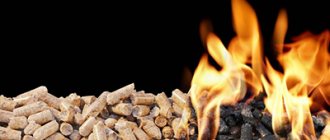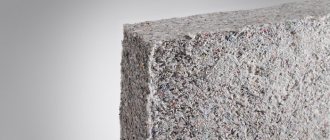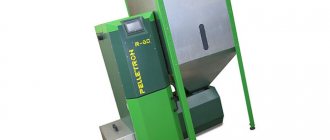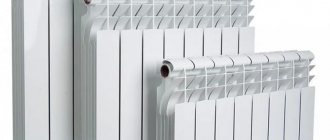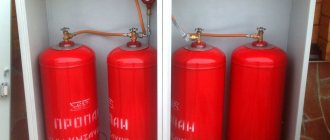Basic requirements for raw materials for pellets
Humidity
Requirements for raw material humidity for industrial pellet granulators are from 8 to 15%. In other cases, the raw materials require drying, or, conversely, steam treatment.
Ash content
The ash content of pellets is the percentage of unburnable residues after burning a batch. For premium pellets this figure is up to 1% according to the EN Plus A-2 standard and up to 0.5-0.7% according to the EN Plus A-1 standard. High ash content of fuel can lead to clogging of the combustion chamber and chimney over time.
Content of chemical compounds in raw materials
At the moment, the European Union is tightening standards for the emission of combustion products into the atmosphere. Raw materials for pellets must contain a minimum amount of chemicals such as azor, chlorine, sulfur.
High energy value of the material
The calorific value of raw materials - how much heat can be obtained during combustion - is the main consumer value for pellets. High-quality raw materials have a high calorie content. This parameter is influenced, among other things, by the freshness of the material. Wood that has been subjected to rotting loses part of its energy potential.
Suitability for granulation
Certain materials can be easier or more difficult to press and prepare. Moreover, less durable and dense pellets can be obtained from difficult-to-granulate raw materials. To increase the strength of granules, various additives are used.
Raw material cost
Such costs add to the cost of raw materials, which also includes procurement and transportation costs. If the total raw material costs are too high, production may not be economically feasible.
Agropellets
One of the most popular types of agricultural pellet raw materials is straw from various agricultural crops (especially wheat and rapeseed). In terms of energy potential, this material is not much inferior to wood: up to 16 MJ/kg versus up to 18.4 MJ/kg. Straw is a renewable source of fuel; burning straw does not change the balance of nitrogen dioxide in the air: during growth, it consumes the same amount of CO2 as it releases during combustion. Straw pellets are also used not only for heating, but also as bedding for animals in livestock farms and stables.
A type of raw material similar to straw is reed, while its higher calorific value is 19 MJ/kg, and its ash content is approximately 4%. Such raw materials are very cheap; they are collected using swamp harvesting and grinding machines.
Sunflower husk is one of the most promising materials for agropellets. Sunflower pellets have an ash content of 3%, and give off almost as much heat as brown coal - up to 21 MJ/kg. Ash after burning husks is a valuable fertilizer. Buckwheat husks, millet husks, and rice husks are also granulated.
Characteristics and types of pellets
Pellets are bars of the same cylindrical shape pressed on special screw granulators. Sawdust is supplied mainly by wood processing plants. Advantages of pellets:
- Environmentally friendly.
- They are used for boilers in industry and boilers in everyday life.
- Gives a lot of heat.
- Not expensive at cost.
- Convenient transportation (the structure of the pellets is not damaged during transportation).
In addition to sawdust pellets, the following are produced:
- Peat. High quality, but usually used in large industries. They have a high percentage of ash content. Domestic boilers will have to be thoroughly cleaned after use.
- Coal.
- Vegetable (from buckwheat husks, corn).
- Made from straw. You get a lot of pellets and they are cheap. The percentage of ash is high - up to 3%, therefore they are used in industry. Requires constant cleaning of the boiler.
- From chicken droppings.
Pellets are also used in pyrolysis boilers. The moisture content of compressed granules is 7-10%. Density - 1200-1400 kg/m3.
Characteristics of other types of fuel:
| Type of fuel | Heat of combustion | Sulfur(%) | Ash(%) | Carbon dioxide |
| Diesel fuel | 42.5 MJ/kg | 0.2 | 1 | 78 Kg/GJ |
| Fuel oil | 42 MJ/kg | 1.2 | 1.5 | 78 Kg/GJ |
| Natural gas | 35-38 MJ/m3 | 57 Kg/GJ | ||
| Coal | 15 – 25 MJ/kg | 1-3 | 10-35 | 60 Kg/GJ |
| Wood pellets | 17.5 MJ/kg | 0.1 | 0,5-3,0 | |
| Straw pellets | 14.5 MJ/kg | 0.2 | 4 | |
| Peat granules | 10 MJ/kg | 4-20 | 70 Kg/GJ | |
| Wood chips | 10 MJ/kg | 1 | ||
| Wood sawdust | 10 MJ/kg | 1 |
Other materials
Russia has vast deposits of peat, which is suitable for granulation. Peat pellets and briquettes are made using approximately the same technology as wood. The calorific value of peat is high - up to 21 MJ/kg, however, the ash content of such granules is increased - up to 5%. This fuel is suitable for industrial and municipal boilers. In Russia, granulation and briquetting of peat has mainly 2 prospects: providing heat and electricity to non-gasified areas and exporting granules to Scandinavian countries. In Northern Europe, peat is recognized as a partially renewable raw material, and its use in the energy sector is encouraged from above.
Granulation of waste paper is a fairly new but promising industry, since this type of raw material does not require expensive drying complexes. Granules made from paper and cardboard (and in some countries granulation of old banknotes has been established) produce a large amount of heat and have a tiny percentage of non-combustible residues.
Chicken and horse manure pellets are more expensive than wood pellets. It is a valuable and nutritious fertilizer for soils. Horse manure pellets sell for around €1.25 per kilogram. Processing manure and droppings into fertilizers is not only profitable, but also a necessary step, since storing such waste directly harms the environment.
The same can be said for the processing of hydrolysis lignin, a by-product of hydrolysis plants. In Russia, there is only one lignin granulation plant in the Arkhangelsk region, and meanwhile its reserves in the country amount to tens of millions of tons. In terms of calorific value (more than 21 MJ/kg) and ash content (less than 3%), lignin is an excellent raw material for pellet production.
Expanding the raw material base for the production of fuel pellets makes it possible to benefit from the disposal of huge amounts of biological waste, as well as solve environmental problems associated with their storage. Switching from fossil fuels to environmentally friendly fuels reduces emissions of harmful substances into the air. The creation of new pellet and briquette production creates new jobs in the agricultural industry and helps its overall development.
Advantages and disadvantages
Speaking about quality characteristics, you need to start from the positive side, since the material has more such qualities than negative ones:
- Environmental friendliness. Enough has already been said about this; we can add that during the combustion process, carbon dioxide is released from them in an amount equal to the natural decomposition of wood. This allows us to reduce the greenhouse effect, which is a global problem today.
- Its low ash content makes it a virtually waste-free material, and the remaining cinders can be used as fertilizer.
- Pellets are not subject to self-ignition, so the risk of fire during transportation and storage is minimal.
- They are easy to stack and store, and their high bulk density allows them to be transported in large quantities.
- High calorific value is characterized by the fact that one ton of this fuel produces up to 3.5 thousand kWh of heat.
- Waste-free production is justified by the fact that residues from woodworking production are used for their production.
They also have disadvantages that do not stand out too much against the background of their positive qualities:
- To use them, you need a specialized pellet boiler. It is not prohibited to work with conventional sources; this simply increases the combustion efficiency.
- Despite its widespread use abroad, in Russia it is an expensive type of fuel, and purchasing a specialized boiler will cost more than purchasing a regular wood-burning one.
- By organizing heating with pellets, you will of course be able to save on heating costs in the future, but to store them, you need a dry warehouse.
Firewood traditional fuel
First of all, firewood harvested from trees of various species is suitable for heating. They differ in structure and ability to transfer heat. The performance of the boiler will depend on this. The calorific value of firewood varies depending on the type:
- 1600-3200 kilocalories, with an average humidity of up to 12 percent.
- If this humidity indicator is higher, from 40 to 50 percent, then the calorific value decreases.
Moreover, fuel with high humidity will have to be dried first. This can be done by placing the stored fuel in special rooms with good ventilation.
Firewood is not cheap. For example, in the Moscow region you will have to pay at least 2 thousand rubles
. If the firewood is split and well dried, then its cost is in the range of 4-5 thousand. It should be noted that when burned, firewood produces a large percentage of ash.
What are pellets made of?
Many owners of private houses wonder what pellets are made from. It is worth noting that people often make such products on their own. To do this, it is enough to stock up on a crusher, a sieve, a dryer designed specifically for sawdust, as well as a granulator. The optimal raw materials for the manufacture of such products are waste from the wood processing industry:
- sawdust;
- trimmings;
- shavings;
- croaker;
- wood flour from deciduous and coniferous trees;
- other waste generated during wood processing.
For example, in the process of producing gray pellets, wood waste is often combined with bark. Pellets of this type are usually placed in large bags. They are very often used in European boiler houses, which have impressive power. Wood fillers for pet trays are also produced using a similar method. Pellets are also made from agricultural waste. The components in this case can be straw or dried hay. Today, many farmers create pellets for heating from raw materials such as:
- reed;
- sunflower husk;
- hay;
- rice husk;
- other agricultural waste.
If you take all the waste, then with the exception of rice husks, there are no difficulties in recycling them. To do this, it is enough to use simple equipment equipped with a ring-type matrix. Processing these components takes a minimum of free time, and large investments are not required.
Pellets are also made from raw materials such as peat. Such products are characterized by an impressive calorific value and high ash content. The manufacture of such options requires specialized equipment and good resources, because the procurement of peat raw materials is a seasonal procedure that requires certain costs.
My services
If you are going to make your own production of fuel pellets or are going to install heating using pellets, then you will simply need high-quality information on how to do it correctly and better. Why do I say this because I know how often things are organized poorly. So, in order not to get burned, I offer consulting services. You can contact SUPPORT and get quality information.
Combustion stages
Any fuel produces a certain percentage of heat when burned.
The same thing happens with pellets when they enter the combustion chamber. Conventionally, the heat transfer process can be divided into three stages:
- Stage one is evaporation of the liquid. This is a fleeting process. Due to the low moisture content (8-10%), for example, in dry firewood it is 30%, high combustion efficiency is ensured.
- Stage two is pyrolysis. At which about 80% of the thermal energy is released from the pellets. The most important point here is that it is necessary to ensure a maximum flow of oxygen into the combustion chamber.
- Stage three – burning charcoal. In the product residues, after the release of pyrolysis gas, about 20% of thermal energy remains. In order to generate maximum heat from pellets, the oxygen supply at this time must also be maintained at the required level.
At all stages, it is important to maintain an optimal level of combustion, regulated by the oxygen content in the furnace. We also do not recommend an excess, in this case, most of the energy will “fly down the drain”; the disadvantage is undesirable because the pellets will not completely burn out, ensuring a minimum heat flow
Economic comparison
Fuel price
It is believed that according to this criterion, firewood is in the lead. They are cheap (especially slabs), and literally everything that belongs to the category of wood waste can be placed in such boilers. In this regard, they are omnivores - as long as it burns.
However, a more detailed examination of the issue shows that the price of firewood and pellets will cost approximately the same. It is clear that indicators vary by region, but the average data is as follows:
- Pellets - for 1 ton (which is identical to 3.5 “cubes” of firewood) you will have to pay about 6,000 rubles.
- Logs – 1 m3 (chopped) cost approximately 1,800±200.
Efficiency of heating units
- Wood stoves – no higher than 60%.
- Pellet boilers – up to 93%. At least, this is indicated in the documentation from the manufacturer.
Conclusion 6 – when heating with wood, almost half of the heat literally “flies down the drain.” That is, the owner heats not only the house, but also the atmosphere.
Boiler price (in Russian rubles)
- Wood - from 18,000.
- Pellet - from 78,000.
If we analyze all the components, it turns out that there is no clear answer to the question of what is better, firewood or pellets. Everyone must decide for themselves, focusing on those parameters that are a priority for them.
Using these links you can get acquainted with the most popular models of wood-burning and pellet boilers.
What to consider
- Correctly assessing the feasibility of using a particular type of fuel is not a guarantee of the effectiveness of heating a building. A lot depends on how well the boiler is selected. There are many modifications of equipment on sale, even from one manufacturer, and only a professional can calculate all its required parameters, taking into account local specifics. It should be understood that the boiler is selected individually for a specific building, with all its features (number of floors, layout, wall material, wear and tear, and so on). Otherwise, savings on fuel will be ephemeral, and money on heating equipment will be spent irrationally.
- Some models of wood boilers can be converted to work with pellets. Therefore, there is no need to dismantle the old unit and purchase a new one. But even here you cannot do without the services of a specialist.
ALFATEP is always ready to help residents of the Moscow region resolve the issue of organizing heating for any type of building. The company has been selling and installing heating equipment in buildings for various purposes for several years. Just dial the contact phone number, and its employees will professionally answer any question regarding home heating and help with the selection of a boiler. When concluding a contract, the craftsmen themselves will deliver it to the site, carry out installation and wiring, put it into operation and undertake servicing of the unit.
Pellet classification
According to their grade, pellets are divided into 3 types:
- Industrial pellets. Gray-brown granules. They contain approximately 0.7 mass fraction of ash due to the fact that the wood, which is the material for the production of this type of pellets, has not been debarked. In other words, these wood pellets contain a large amount of bark. Due to the high bark content, not all boilers can operate with such fuel, this leads to their breakdown. But their advantage is their cost: industrial pellets cost less than top quality pellets by about half the amount. And if a person has a boiler that can cope with this type of granules, then you can use them without any problems. However, thanks to this fuel, the boiler will be cleaned more often.
- Agropellets. The color of this fuel varies from gray to dark gray. The color depends on the material from which the pellets are made. You can often find sawdust pellets. This type is usually obtained from agricultural waste, such as straw, hay, leaves and others. Therefore, sometimes this kind of fuel is called straw pellets or leaf pellets. This type of fuel is the cheapest, since combustion produces a huge amount of ash, even more than when burning industrial pellets. They are usually used at large thermal power plants; regular cleaning of toxins is required. However, this type of fuel causes a number of problems: the highest ash content and the problem of transportation, which is why agropellets are cheaper than other pellets. During transportation, half of the granules crumble into dust due to their softness. And, as you know, such dust will no longer serve as material for boilers - the boilers will become even more clogged. Therefore, to use this type of fuel, the best option would be to be located close to the place where agropellets are produced.
- White pellets. From the name it is clear that granules of this class are distinguished by their slightly gray, yellowish-white or completely white color. They have their own pleasant smell - the smell of fresh wood. Such pellets are expensive, since their ash content is the lowest and is approximately 0.5%. If you use such fuel for heating, you can forget about cleaning the boiler for the next couple of months. When using them, the equipment will last a long time, and little ash will be released from them.
There is also a separate type of pellets that is not included in this classification:
Peat pellets - such fuel is characterized by high ash content. This material is environmentally friendly and environmentally friendly. Due to the ash content, these pellets are used only in industry. And most often - in improving fertilizers.
Main types
Wood pellets
They are made in the form of cylindrical granules from wood waste (sawdust, chips, bark, slabs, low-quality wood). They are divided into household and industrial. Household pellets are made from fresh sawdust and wood chips. Industrial granules contain other impurities. They are light, brownish, or gray.
A lighter color indicates a high quality of granules (light is a sign of the use of exceptionally good wood without bark and clean sawdust). They are the most popular for heating private houses, since this type of pellets has the lowest ash content, since they do not contain dust and tree bark (up to 0.5%) and have good heat transfer.
Vegetable pellets
They are also produced in granular form from agricultural waste (straw, sunflower husks, corn and buckwheat waste). The final product is generally dark in color. In terms of heat transfer, these granules are in no way inferior when it comes to pellets made from sunflower husks, corn and buckwheat, since straw pellets are inferior to wood pellets in this indicator.
But at the same time, straw pellets have their advantages: a large amount of raw materials and low cost. Vegetable pellets have a higher ash content (up to 3%) than wood pellets, so the boiler will need to be cleaned more often. This type is intended for use for industrial purposes, since combustion releases a larger amount of ash.
Peat pellets
They are made in the form of peat granules, the color is dark. They are also popular among industrial enterprises, as they have good calorific, economic and environmental qualities. They are not widespread among private consumers due to their high ash content, since the boiler will need to be cleaned very often after using peat granules.
Heating with regular wood
Firewood has been used for heating for a very long time; it is a high-quality fuel for the home and bathhouse, barbecue and barbecue. The environmental friendliness of firewood will always be 100%, and this fuel has plenty of other advantages. Let us note the main advantages of firewood, without delving deeply into this topic:
- First of all, I would like to say that the process of harvesting, drying and storing firewood is understandable to everyone. From an early age we know how to look for firewood, collect and light it.
- Lighting wood is not difficult. Some tree varieties can burn in high humidity, giving off heat.
- The cost of firewood is low, even if you do not go through the entire harvesting cycle, but buy ready-made logs or logs. (However, until the prices of different types of fuel are compared, it will not be possible to say which is more profitable.)
- Firewood is not afraid of mechanical damage and can be completely different.
- From an aesthetic point of view, the wood burns perfectly. They create a beautiful fire and soulful crackle, and when some varieties burn, a characteristic pleasant aroma appears. For open fireplaces, where the appearance of what is happening is important, this fuel is considered optimal.
- The substances released during the combustion of wood have a beneficial effect on humans, they calm the nervous system and heal the respiratory system.
Strategic forest reserve for winter
We will also highlight the disadvantages of natural fuel:
- To obtain high heat transfer, the firewood should be well dried under natural conditions, which requires an extremely long time, for example, 1 or 2 years. The best firewood is wood that has lain in a dry shed for a couple of years.
- During long-term storage, wood loses some of its qualities, especially fragrant varieties of trees.
- Firewood takes up a lot of space; for its normal storage in the required quantity, it is necessary to build an appropriate structure.
- When using firewood, a lot of debris always appears (chips, bark, wood dust, sawdust).
Having become acquainted with the main capabilities of the two types of fuel, let's make a comparison.
Types of pellets and their production technology
Pellets today are a fairly popular type of secondary raw material. For example, the UK produces around 600,000 tonnes of sawdust pellets every year. China aims to reach 50 million tons of green fuel production annually.
This is interesting: what are pellets made from?
Each pellet manufacturer has a different composition of the finished material. Pressed pellets can consist of only wood or be made with the addition of bark, resin, seed husks and other materials that are easily flammable. Biological granules are used not only as an energy source, but also for other purposes (for example, for cat litter or as an absorbent material).
There are many types of pellets
Fuel production is carried out in several stages:
- The wood is coarsely crushed using special installations and dried in drums. Humidity should be 8−12%.
- Large fractions are crushed into smaller ones. For this purpose, mills that operate on the hammer type are used.
- For good viscosity and compaction, the workpiece must be treated with steam. In this case, screw mixers are used.
- Pressing on a specialized press and cooling.
Equipment for the production of fuel pellets leaves virtually no waste. The entire marriage can be reworked.
In this video you will learn how to make pellets with your own hands:
conclusions
I have given information that needs to be processed. Gave advantages of pellets over firewood and vice versa. For each case you need to select your own optimal option. For example, I would not install a pellet boiler in a village where everything is heated with wood, which is available for practically nothing. Just like in a large cottage in the suburbs I would not heat it with wood, since it would be much more convenient for me to heat a large area with pellets.
No one will decide for you what exactly you need. So go ahead and good luck to you. Oh, and by the way, I forgot about the answer to my friend. And I answered my friend like this: “If it weren’t beneficial for the consumer, then everyone would have gone bankrupt long ago, try to get you from a Mercedes to a Muscovite and will you get in?”
Good luck and see you again, Andrey Noak was with you!
Technological process
Regardless of which machines are used for the production of fuel pellets, the production process consists of such technological operations as:
- Cleaning and preliminary grinding of raw materials, which are brought to such a state that the length of its particles does not exceed 2.5 mm.
- Drying sawdust mass, the humidity of which is brought to a level of 9–12%.
- Final grinding on a machine, which is carried out so that the maximum length of the particles that make up the sawdust mass does not exceed 1.5 mm.
- Mixing the crushed raw material with water or treating it with hot steam (this technological operation is used if the moisture level of the sawdust after drying and grinding has dropped below the minimum permissible value).
- Pressing the sawdust mass, as a result of which cylindrical granules are formed from it (for the practical implementation of this technological operation in a production environment, matrix installations of a cylindrical or flat type can be used; at home, homemade installations of a lever, screw or hydraulic type are suitable for the formation of fuel briquettes) .
- Cooling of finished pellets, which during their formation using high pressure spontaneously heat up to a significant temperature.
- Sorting of finished fuel pellets and their packaging.
Pellet production line
How to make money on pellets
This is not the topic of this article. But we still want to note that in order to organize profitable production, you need access to large quantities of wood waste and a line with a pellet productivity of 2000 kg/hour. The money invested in such a line will pay off on average in 1-3 years.
But, as they say, nothing is impossible. You need to think, calculate and do!
Loading fuel
A wood-burning stove must be constantly looked after and logs must be added in a timely manner. In a harsh winter, with long nights, at a minimum (and very likely), you will have to get up a couple of times. Pellet boilers are equipped with a special hopper. It is enough to load pellets into it, and you can not go near the heating device for several days, or even weeks (depending on the model) - the automatic system independently feeds pellets into the firebox as they burn out.
Microclimate regulation
The level of automation of wood boilers is zero. Pellet analogues, depending on the set temperature, maintain it in the room themselves, dosing the supply of pellets into the firebox.
Conclusion
3
– those who are accustomed to comfort and value personal time should choose a pellet boiler.
Industrial equipment for the production of sawdust pellets
Let's consider the sawdust granulation line LG-500
from the ALB Group company with a productivity of
500 kg per hour
.
Grinding
The initial stage of production is crushing of raw materials. For this purpose, a rotary pneumatic crusher or a hammer crusher for wood is used. The impact crusher (IRC) features a convenient pneumatic system for intake and unloading of material; its operation does not require connecting conveyors for bulk materials.
A hammer crusher is superior to a rotary crusher in terms of productivity, since its power is spent only on crushing, while the DRP uses part of its power to operate the pneumatic system.
The DRP crusher crushes sawdust with knives-beaters attached to the rotor. The chamber contains a sieve with holes through which particles of the required size pass. They are fed through a pneumatic hose directly into the cyclone and then into the agitator hopper.
Crusher DRP 18.5 – 141,000 rub.
Aspiration
A cyclone is necessary to ensure that the air in the room is not filled with wood dust. These microparticles are formed during grinding. The BCR cyclone separates wood flour from the air flow. The device is installed above the hopper on a steel frame.
Cyclone BCR -675 – RUB 29,000
Cyclone frame – RUB 12,000
Operational accumulation
After air purification, the flow of raw materials enters the agitator hopper. This is a cylindrical chamber with a mixing mechanism at the bottom; its operation prevents the mass from caking. The hopper evenly supplies crushed sawdust into the receiving hopper of the granulator.
Bunker-turner BV-1 – RUB 205,000
Granulation
The granulator is the basis of pellet production. Once in the receiving hopper of the granulator, the raw material is moved by a screw feeder into the mixer, where surface moistening with water occurs. The sawdust then enters the working chamber, where it is clamped between the press rollers and the surface of the rotating annular matrix. Under pressure, the granules pass through the holes of the matrix and are broken off from the outside with a static knife.
The OGM 0.8 and 1.5 granulator is a simple and reliable equipment for the production of sawdust pellets, which ensures high-quality pressing. The device is connected to the control panel. A similar controller is installed for the rest of the line.
Press granulator OGM-0.8M-55 – RUB 1,550,000
OGM control panel with Schneider Electric components – RUB 125,000.
Control panel PU-LG-500 (Schneider Electric) — RUB 135,000
Cooling
As already mentioned, to obtain a quality product it is necessary to cool the granules. To do this, they are transferred from the granulator to a scraper belt conveyor, which delivers them to the cooling column. Inside the column, the product is cooled using air currents, the fine fraction is screened out, which is then sent back for granulation. The cooled granules are fed by a conveyor to the packaging unit.
Conveyor KLS-300-6 — RUB 119,000
Conveyor KLS-300-4 — RUB 101,000
Cooling column RKO-700 – RUB 193,000.
Packing
A popular solution for packaging fuel pellets is big bags. They are fixed to the frame, and at the bottom there are platform scales that control the filling of the bag.
Frame for big bag – 25,000 rub.
Platform scales – RUB 66,000
When adding up the cost of all equipment for the production of sawdust pellets, the price of the line is 500 kg / hour
is
2,701,000 rubles
.
Contact ALB Group using the website contact form and receive a price list
and a commercial offer for a line for the production of fuel pellets from sawdust and shavings.
When might additional equipment be needed?
Often, enterprises contain various types of waste. To the shavings and sawdust , slabs, wood pulp, thin gauge, substandard products
.
Such materials must first be crushed to a fraction up to 3.5 cm long. Drum and disk chippers
.
Before organizing production, you should analyze whether all waste at the enterprise is homogeneous, and whether it is worth focusing only on sawdust. If there is a lot of large waste, then it makes sense to purchase a chipper.
If you are working with wood with a moisture content above 15%
, then for full production of pellets you will need
a drying complex
. It usually consists of an AVM drying drum and a combustion unit or heat generator. Such complexes significantly increase the cost of the entire line - up to 2 times.
Biofuel
Methyl alcohol is obtained from sawdust, which can be used for heating and any engines configured to run on gasoline or gas.
Methyl alcohol is very poisonous and should not be drunk .
There are industrial and home methods for producing alcohol from this product, the difference between them is in the method of producing glucose from sawdust.
For both methods, it is necessary to grind the sawdust as much as possible - the smaller its size, the higher the yield of the finished product.
To obtain biofuels, it is desirable to use hardwood , since they produce more glucose.
For more information about shredding devices, read the article “Equipment for processing wood waste.”
Having converted the sawdust into glucose, they are fermented with yeast , and after fermentation is completed, they are heated to a temperature of 60–70 degrees so that the alcohols evaporate. This steam is then cooled and a mixture of various alcohols is obtained, which, after purification, becomes biofuel.
Any gasoline engine can run on this fuel , although the engine needs to be slightly modified for maximum efficiency.
Read more about the production and use of biofuel here.
Set of equipment and production technology
The equipment configuration and its cost are determined by the planned production turnover. The following equipment can be identified as the basic equipment:
- Wood material shredder – from 180,000 rubles.
- Dryer – 400,000 rubles.
- Granulator - from 100,000 rubles.
- Cooler - about 400,000 rubles.
When purchasing equipment, you must contact the manufacturer directly - this will help avoid additional markups. You can also resort to buying used equipment to reduce the cost.
The production technology is divided into stages:
- Fine crushing of raw materials for the highest quality drying.
- Drying of future products is carried out using belt or drum type equipment. The drying result is determined by the percentage of humidity and should not exceed 15%.
- The level of crushing of the material is determined by the intended purpose of the granules - for high-quality raw materials, a filter of no more than 1.5 cubic meters is used. mm, and for industrial products - no more than 4 cubic meters. mm.
- The processed material undergoes a water treatment process - the level of moisture content is analyzed. If the moisture percentage is below 8%, special steam treatment will be required. This is necessary for high-quality molding of products, since a low level of moisture negatively affects further pressing.
- Subsequently, the material is pressed, after which the pellets are cooled. Thanks to cooling, the granules harden and retain the required shape.
- The final stage is sifting, as well as packaging and preparation of products. Crumbs and defective goods are screened out from the finished product and then sent to the initial stage of production.
It is worth noting that the quality of the products is determined by the level of ash content during its further operation. If the ash content is above 1.5%, then this product can only be used for industrial purposes.
Equipment for the production of
The production of fuel pellets is impossible without the use of special equipment that is used for all kinds of procedures necessary during production.
The list of devices includes:
- wood chipper;
- drying drum;
- hammer mill;
- screw mixer;
- press;
- cooler
Device for making pellets from sawdust
You need to understand that to produce high-quality pallets you need to purchase each device. The total cost of the entire list is about 2 million rubles.
It is also worth paying attention that the machine that directly produces granules operates exclusively on electricity, and therefore requires a special place in which it will be located. Accordingly, to the cost of the equipment you need to add work to create such a place for production, and this can cost up to hundreds of thousands of rubles
The installation itself is driven by a diesel engine, thanks to which it has excellent mobility and can be installed almost anywhere. Where wood processing work is carried out. That is why the production of wood pellets does not include the cost of transporting raw materials.
For large-scale production of pellets, you will need to buy an industrial plant capable of producing a production capacity of up to 1000 kg of pellets per hour. However, its cost is rather large and amounts to about 132 thousand dollars. Such a device should pay for itself in about 7 years.
Sales abroad
The pellet export market deserves special attention. In developed European countries, the consumption of this particular type of fuel is the most common. Most municipal and private buildings, as well as industrial boiler houses, are equipped with boilers operating on it.
In this regard, the Western European region is now considered the largest consumer of pellets. Currently, the share of domestic granular fuel in this market is very small. According to economists’ calculations, over the next ten years the need for this type of fuel here may increase tenfold, which we can try to take advantage of.
Types of pellets
The following types of pellets can be distinguished:
- Wood - made from various types of wood materials, for example, sawdust, chips, bark, slabs or low-quality wood. Wood pellets are divided into household and industrial. Household ones are made from fresh sawdust, and industrial ones are made from raw materials with various impurities. Wood pellets come in grey, brown or light shades. The shade determines the quality of the supplied wood - the lighter the material produced, the higher quality and “clean” the raw materials were used. For example, light pellets are the most popular when used as a heating source, as they have a low ash content due to the absence of bark and wood dust in the product.
- Vegetable - made from agricultural waste, for example, straw, sunflower husks, corn or buckwheat waste. As a rule, the plant version has a dark shade. Vegetable pellets are characterized by low cost, high ash content and are used for industrial purposes.
- Peat - made from peat and have a pronounced dark color. Peat pellets also have a low cost and a high level of ash content during operation. For this reason, the peat version is used for industrial purposes.
